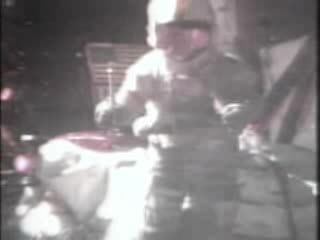 | ||
In 1589 the Italian scientist Galileo Galilei is said to have dropped two spheres of different masses from the Leaning Tower of Pisa to demonstrate that their time of descent was independent of their mass, according to a biography by Galileo's pupil Vincenzo Viviani. Via this method, he supposedly discovered that the objects fell with the same acceleration, proving his prediction true, while at the same time disproving Aristotle's theory of gravity (which states that objects fall at speed relative to their mass). At the time when Viviani asserts that the experiment took place, Galileo had not yet formulated the final version of his law of free fall. He had, however, formulated an earlier version which predicted that bodies of the same material falling through the same medium would fall at the same speed. This was contrary to what Aristotle had taught: that heavy objects fall faster than lighter ones, in direct proportion to weight. While this story has been retold in popular accounts, there is no account by Galileo himself of such an experiment, and it is accepted by most historians that it was a thought experiment which did not actually take place. An exception is Drake, who argues that it took place, more or less as Viviani described it, as a demonstration for students.
The experiment did take place in Delft in 16th century the Netherlands, when the mathematician and physicist Simon Stevin and Jan Cornets de Groot (the father of Hugo de Groot) conducted the experiment from the top of the Nieuwe Kerk. The experiment is described in Simon Stevin's book De Beghinselen der Weeghconst (The Principles of Statics), published in 1586 and a landmark book on statics:
'Let us take (as the highly educated Jan Cornets de Groot, the diligent researcher of the mysteries of Nature, and I have done) two balls of lead, the one ten times bigger and heavier than the other, and let them drop together from 30 feet high, and it will show, that the lightest ball is not ten times longer under way than the heaviest, but they fall together at the same time on the ground. (...) This proves that Aristotle is wrong.'
Galileo arrived at his hypothesis by a famous thought experiment outlined in his book On Motion. Imagine two objects, one light and one heavier than the other one, are connected to each other by a string. Drop this system of objects from the top of a tower. If we assume heavier objects do indeed fall faster than lighter ones (and conversely, lighter objects fall slower), the string will soon pull taut as the lighter object retards the fall of the heavier object. But the system considered as a whole is heavier than the heavy object alone, and therefore should fall faster. This contradiction leads one to conclude the assumption is false.
